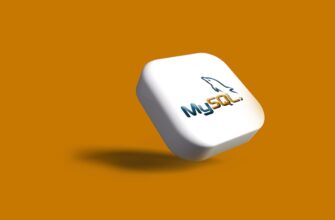Introduction: Why Your Money Needs a Safety Net in 2025
In an era of digital banking, volatile markets, and evolving cyber threats, knowing the best way to backup funds isn’t just smart—it’s essential for financial survival. As we approach 2025, economic uncertainties and technological advancements demand proactive strategies to protect your hard-earned money. This guide cuts through the noise to reveal practical, future-proof methods for securing your funds against unexpected disasters. Whether you’re safeguarding savings, emergency cash, or investment capital, we’ll explore actionable solutions that balance accessibility, security, and growth potential.
Why Backing Up Funds is Non-Negotiable in 2025
Financial vulnerabilities are multiplying. Cyberattacks cost the global economy $8 trillion annually, while inflation erodes cash value. Regulatory changes and bank instability add layers of risk. Backing up funds ensures:
- Disaster recovery from hacks or bank failures
- Inflation hedging through diversified assets
- Immediate access during emergencies
- Peace of mind in turbulent times
In 2025, a single point of failure could wipe out your liquidity. Multi-layered backups are your financial insurance policy.
Top 5 Fund Backup Methods for 2025 (Ranked by Security & Efficiency)
- Multi-Bank Diversification
Spread funds across 3+ FDIC/NCUA-insured institutions. Use:
– One primary checking account
– One high-yield savings account
– One credit union account
Why it works: Maximizes insurance coverage ($250k per institution) and reduces systemic risk. - Hardware Wallets for Digital Assets
Store cryptocurrencies offline using devices like Ledger or Trezor. Essential for:
– Bitcoin, Ethereum, and stablecoins
– Long-term crypto holdings
2025 Edge: Quantum-resistant encryption upgrades combat next-gen hacking. - Treasury-Direct & Government Bonds
Allocate 20-30% of backup funds to:
– Series I Bonds (inflation-protected)
– T-Bills via TreasuryDirect.gov
Benefit: Zero default risk with yields outpacing traditional savings. - Geographically Distributed Cash Reserves
Keep physical currency in:
– Fire/waterproof home safes
– Trusted relative’s location (different region)
Critical for: Natural disasters or digital payment failures. - Automated Cloud-to-Offline Sync
Use tools like Cryptomator with encrypted cloud storage (e.g., Tresorit) paired with external SSD drives.
Ideal for: Digital records, passwords, and asset documentation.
Step-by-Step Backup Implementation Plan
Phase 1: Assessment (Week 1)
– Audit all financial accounts
– Determine 3-6 months’ living expenses as backup target
Phase 2: Diversification (Week 2-3)
– Open accounts at new institutions
– Purchase hardware wallets
– Allocate bond investments
Phase 3: Automation (Ongoing)
– Set up recurring transfers to backup accounts
– Schedule bi-annual security reviews
– Enable transaction alerts
Critical Mistakes to Avoid
- Over-relying on one bank: Spread across jurisdictions
- Ignoring inflation: Always include inflation-adjusted assets
- Poor documentation: Store passwords/keys in encrypted formats only
- Infrequent testing: Conduct withdrawal drills quarterly
Future-Proofing Your Strategy
Anticipate 2025’s challenges:
– Quantum computing threats: Migrate to quantum-safe cryptography by Q3 2024
– CBDC integration: Allocate 5-10% to central bank digital currencies
– AI monitoring tools: Implement anomaly detection for unusual account activity
Review your backup matrix every 6 months with a fiduciary advisor.
Frequently Asked Questions (FAQs)
Q: How much should I allocate to fund backups?
A: Minimum 3 months of living expenses, ideally 6 months. Split 50% liquid cash, 30% inflation-resistant assets, 20% physical/crypto.
Q: Are digital wallets safer than banks in 2025?
A: They serve different purposes. Use banks for FDIC-insured liquidity and hardware wallets for crypto/stablecoins. Never store all assets in one format.
Q: What if my backup funds lose value to inflation?
A: Combine methods: High-yield savings accounts (4-5% APY) + Series I Bonds (CPI-adjusted) + short-term T-Bills. This trio historically outpaces inflation.
Q: How often should I test my backup system?
A: Quarterly withdrawal tests from each backup source. Full security audit every 6 months.
Q: Can I use fintech apps like PayPal as backups?
A: Only for minor funds. Most lack FDIC insurance beyond cash accounts. Never rely on single fintech platforms for core backups.








